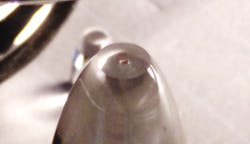MiLiQuant aims to put industrial quantum sensing and imaging into practice
The MiLiQuant research project, a partnership between Johannes Gutenberg University Mainz (JGU; Mainz, Germany) and Robert Bosch (Gerlingen, Germany), aims to help quantum technology to make the leap from scientific research to concrete applications.
In the collaborative project MiLiQuant, short for "Miniaturized light sources for use in industrial quantum sensors and quantum imaging devices", the researchers enhance diode laser beam sources so that they can be employed in industrial quantum technology applications. The goal is to develop miniaturized, frequency- and power-stable beam sources that can also be used outside laboratories. These core technologies are being customized to meet the requirements of specific applications in quantum sensor technology and quantum imaging.
The German Federal Ministry of Education and Research (BMBF) will be supporting the project to the tune of approximately EUR 9.4 million over the next three years to early 2022. Further German partners are Q.ant in Stuttgart, Carl Zeiss in Jena, Nanoscribe in Eggenstein-Leopoldshafen, and Paderborn University.
Quantum gyroscopes and other uses
Miniaturized light sources are required in industrial sensors and imaging systems. The MiLiQuant participants are focusing on the research and development of compact industrial light sources with output powers of up to 1 W. Such light sources either directly rely on quantum-mechanical phenomena themselves or enable quantum-mechanical effects to be harnessed.
To demonstrate the feasibility of quantum sensors, scientists of the Quantum, Atomic, and Neutron Physics (QUANTUM) group at the Institute of Physics at JGU and Robert Bosch are developing quantum-based angular-rate sensors (gyroscopes), for example for use in driverless vehicles. "We are developing one sensor based on nuclear spin comagnetometry with alkali gas cells, while another is based on color centers in diamonds," says Arne Wickenbrock, a researcher in QUANTUM and at the Helmholtz Institute Mainz (HIM). "The latter, in particular, offers great potential for miniaturization."
Other possible applications to be developed through the collaborative project include the use of diamond-based sensors in medical diagnostics to detect, for instance, brain and nerve activity during surgery, quantum sensors for noninvasive monitoring of neural activity and heart rate in unborn babies, and reduced-radiation microscopy in the mid-infrared range.
Source: http://www.uni-mainz.de/presse/aktuell/8606_ENG_HTML.php

John Wallace | Senior Technical Editor (1998-2022)
John Wallace was with Laser Focus World for nearly 25 years, retiring in late June 2022. He obtained a bachelor's degree in mechanical engineering and physics at Rutgers University and a master's in optical engineering at the University of Rochester. Before becoming an editor, John worked as an engineer at RCA, Exxon, Eastman Kodak, and GCA Corporation.
